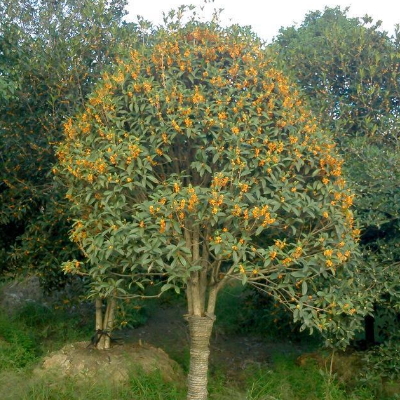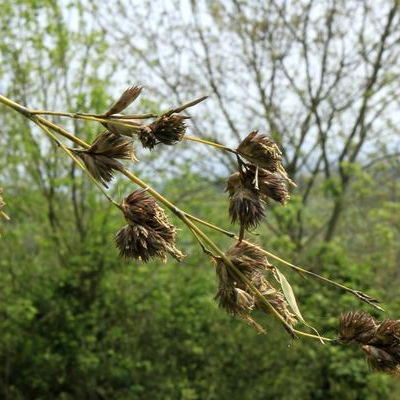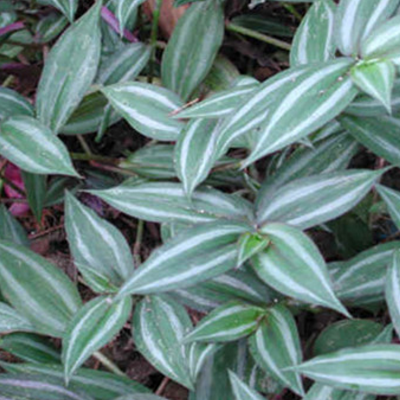What if the leaves of sweet-scented osmanthus trees are dry? what if they turn yellow?
Sweet-scented osmanthus tree, in life, many people plant their own sweet-scented osmanthus tree, but in this process it is found that the leaves will be withered and yellowed. What if the leaves of the sweet-scented osmanthus tree are dry? What if the leaves of flowers and trees turn yellow?

What if the leaves of the sweet-scented osmanthus tree are dry:
The withered leaves of sweet-scented osmanthus are mostly caused by diseases. First of all, attention should be paid to the application of humus fertilizer and potash fertilizer to improve disease resistance; diseased plants should remove diseased leaves (or cut off yellow leaf tips) in time, and fallen leaves should be removed in time to avoid secondary infection.
First, sweet-scented osmanthus leaf blight is easy to occur in the environment of high temperature, high humidity and poor ventilation.
Chemical control:
During the onset of the disease, the initial stage can be sprayed with 100 times of lime Bordeaux liquid, then spray 1000-1500 times of 50% benzoate wettable powder, or 50% carbendazim 800-1000 times for prevention and treatment.
Second, sweet-scented osmanthus brown spot is a common disease of sweet-scented osmanthus, which is caused by subphylum fungal infection, mostly in leaves, mostly from leaf tip and leaf edge to the whole leaf. The light ones affect the ornamental effect, and the heavy ones cause plant death.
Prevention and control measures:
1. Spray potassium permanganate 1000 times solution for disinfection.
2. Spray protection of the whole tree at the initial stage of the disease, such as 70% can kill 300 × 500 times liquid, amiceta 1000 times 1500 times liquid, or 50% carbendazim 500 times solution.
What if the leaves of the sweet-scented osmanthus tree turn yellow:
1. Watering: the soil of sweet-scented osmanthus should be breathable and afraid of waterlogging. It's best not to dry or water it, thoroughly every time. Fear of flooding, in case of waterlogging harm, the root system blackened and rotted, the leaf tip first scorched, and then the whole leaf withered and yellow fell off, resulting in the death of the whole plant.
2. Lighting problem: it is appropriate to arrange the degree and duration of light exposure of sweet-scented osmanthus.
3. Humidity problem: shading and spraying are adopted as far as possible to improve environmental humidity when the temperature rises or when the environment is dry. Generally speaking, it is the tip of the old leaf, which can be improved as long as the humidity is increased by more than 60%.
4. Temperature problem: the optimum temperature for growth is 15-28 ℃. Low or high temperature may cause problems.
5. Ventilation problem: timely increase of ventilation is needed. Suitable for planting in a ventilated and transparent place; like a clean and ventilated environment, not resistant to smoke and dust.
6. Fertilization: potash fertilizer and humus fertilizer should be increased in peacetime to improve their disease resistance.
7. Bacterial problems: Brown spot, at the initial stage of the disease, chlorotic small yellow spots appeared on the leaves and gradually expanded into nearly round spots. Brown spot generally occurred from April to October, and the old leaves were more susceptible to the disease than the young ones.
All right, this is the end of the introduction of the solution to the yellowing and drying up of sweet-scented osmanthus leaves.
What if the leaves of the sweet-scented osmanthus tree are dry?
Sweet-scented osmanthus is one of the top ten traditional flowers in China, and it is also a common flower in landscaping. It is originated in China. It is evergreen and elegant in the four seasons. It has been an important spice since ancient times, and there are also many literati ink writing objects. In the process of planting sweet-scented osmanthus trees, the leaves of sweet-scented osmanthus trees are often dry because of maintenance problems. Let's take a look at how the leaves of sweet-scented osmanthus trees dry up.
Too much watering
[reason] Osmanthus fragrans were overwatered, and the basin soil was wet for a long time, resulting in a lack of oxygen in the soil, resulting in the decay of some fibrous roots, thus weakening the ability of absorbing water and fertilizer, causing tender leaves to turn yellowish, and flowers and leaves gradually becoming dark yellow and scorched one after another.
[methods] watering should be controlled immediately, fertilization should be stopped, and the soil should be often loosened to make the basin soil well ventilated. When the disease is serious, it is necessary to remove the whole land from the basin and put it in the dry mound to make the water seep out quickly, and then plant it back into the basin after the drooping branches and leaves recover.
Too little watering
[reason] Osmanthus fragrans were watered too little or half-watered or missed for a long time, which made the evaporation of water in the leaves greater than the absorption, resulting in a shortage of water supply, yellowing of leaves, scorch of leaf tips, and drooping petiole in serious cases.
[method] it is necessary to move the flowerpot to a cool place immediately, spray some water on the leaves and pour a small amount of water, and then gradually increase the amount of water as the stems and leaves gradually recover. If too much water is poured suddenly at this time, the cytoplasmic wall may be separated, the protoplast will be damaged, and the flowers will die.
Excessive fertilization
[reason] when sweet-scented osmanthus is fertilized too much, especially when there is too much nitrogen fertilizer and lack of phosphorus and potassium fertilizer, it is easy to cause the leaves to turn yellow, showing that the new leaves are thick, most of the leaves are uneven, the old leaves gradually turn yellow and fall off, and when the leaf tip is serious, the leaf tip dries up, even the whole leaf is scorched yellow.
[methods] We should stop fertilizing, increase the amount of water, let the fertilizer flow out of the drainage hole, or pour the basin immediately, remove part of the old soil, wash the soil block with water, replace part of the new culture soil, and then plant the plant back into the basin.
Insufficient fertilization
[reason] insufficient fertilization of sweet-scented osmanthus, especially without applying nitrogen fertilizer or changing soil for a long time, and lack of nitrogen nutrition in the soil, resulting in thin and yellow leaves, thin and yellow leaves and scorched leaf tips.
[methods] it is necessary to pour the pot in time, remove the plant, replace it with a larger pot, put it into a new loose and fertile soil, and replant it. After watering through, slow down the seedlings in half-light, and apply thin liquid fertilizer or compound fertilizer after its growth is restored.
Soil over-alkali
[reason] Osmanthus fragrans likes acidic soil, because the soil in most areas of the north contains more saline and alkali, it will gradually lose green and turn yellow due to the lack of soluble iron elements that can be absorbed by flowers after a period of culture.
[methods] 0.2% ferrous sulfate solution and 0.1% potassium dihydrogen phosphate solution can be poured at intervals to cure the "alkali yellow". At the same time, potassium dihydrogen phosphate also contains phosphorus and potassium elements, which is conducive to flower bud differentiation and improve flower quality.
One of the fengshui plants, what if the leaves of the rich tree turn yellow?
The fortune tree means to get rich in fengshui, so many businessmen and families will use it as a fengshui plant to attract money. However, if the rich tree is cultured improperly in the process of breeding, it is easy to have yellowing leaves, which may lead to changes in fengshui, so what if the leaves of the rich tree turn yellow? This issue of plant fengshui will bring you to understand.
Rich tree leaves yellowing first look at the causes of yellowing leaves to achieve symptomatic treatment: 1, too much watering, basin soil is too wet for a long time, resulting in lack of oxygen in the soil, so that part of the fibrous roots rot, hinder normal respiration and absorption of water and nutrients, causing leaves to turn yellow and fall off. After the injury, the young leaves turn pale yellow, and then the old leaves gradually turn yellow. watering should be controlled immediately, fertilization should be suspended, and the soil should be often loosened to make the soil well ventilated.
2. Drought and dehydration. Flower cultivation leakage watering or long-term watering half waist water (that is, upper wet and lower dry) will affect nutrient absorption, and it is also easy to cause dull and dull leaves and drooping leaves. First, the lower old leaves aged, and gradually withered and yellowed off from the bottom up. At this time, a small amount of watering and spraying is needed to gradually recover and then turn to normal watering.
3. Lose weight for a long time. There is no application of ammonia fertilizer or no change of soil for a long time, and there is a lack of nitrogen and other nutrients in the soil, resulting in thin branches and leaves and thin and yellow leaves. It is necessary to pour the pot in time and gradually apply rarefied mature liquid fertilizer or compound flower fertilizer into new loose and fertile culture soil.
4. Excessive fertilization. If you fertilize too much, the new leaves will be thick and uneven, and the dry tips of the old leaves will fall off. You should immediately stop fertilization and increase the amount of water to make the fertilizer flow out from the drainage hole at the bottom of the basin, or immediately pour the pot, rinse the soil block with water and then plant it again into the basin.
5. Hot and high temperature. In summer, if you put cool flowers (such as cyclamen, Golden Bell upside down, four Seasons Begonia) in a high temperature place to let the strong light shine directly, it is very easy to cause the young leaf tip and leaf edge to scorch, or the leaf yellow to fall off. Move to a well-ventilated shady place in time.
6. Excessive shade. If the sun-loving flowers are placed in shady places or places with insufficient light for a long time, it will cause the branches and leaves to turn yellow.
7. Soil and water is alkaline. There are more saline and alkali in soil and water in most areas of northern China, and flowers with acid-like soil are planted, such as rhododendron, camellia, Michelia, gardenia, orchid, magnolia, sweet-scented osmanthus and so on. Due to the lack of soluble iron and other elements that can be absorbed by the soil, the leaves will gradually turn yellow. Acid soil should be selected when planting, and alum fertilizer and water should be often watered during the growth period.
There are 2 pieces of information 1max 212 next last page
- Prev

Why does the bamboo die after it blossoms? is there any sign?
Bamboo, this is seen by many people, if in the countryside, it is super common, why does this bamboo die after blooming? Is there any sign of bamboo blooming: why bamboo dies after flowering: this is a question that people have been puzzled for a long time, and scientists hold different views on it.
- Next

Can hanging bamboo plum be hydroponically cultivated? how can it blossom more?
Hanging bamboo plum, this is a kind of plant, it is super good-looking, many people like it, can this hanging bamboo plum be hydroponic? How can Diaozhumei blossom more: can Dianzhu Mei be hydroponically cultivated: like calla lilies, it can also be raised in water. If the small plants are raised in water, the rooting time can be shortened.
Related
- Fuxing push coffee new agricultural production and marketing class: lack of small-scale processing plants
- Jujube rice field leisure farm deep ploughing Yilan for five years to create a space for organic food and play
- Nongyu Farm-A trial of organic papaya for brave women with advanced technology
- Four points for attention in the prevention and control of diseases and insect pests of edible fungi
- How to add nutrient solution to Edible Fungi
- Is there any good way to control edible fungus mites?
- Open Inoculation Technology of Edible Fungi
- Is there any clever way to use fertilizer for edible fungus in winter?
- What agents are used to kill the pathogens of edible fungi in the mushroom shed?
- Rapid drying of Edible Fungi

